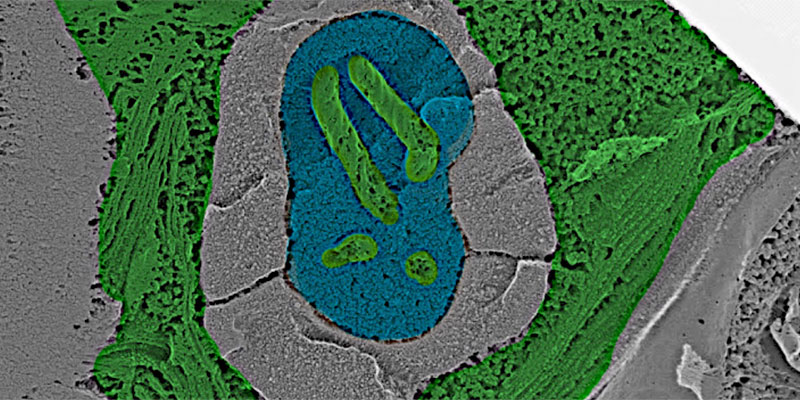
The function and organisation of the pyrenoid
Context
At the centre of the eukaryotic algal CO2 concentrating mechanism (CCM) is an enigmatic organelle called the pyrenoid, where the cell releases CO2 in the proximity of the enzyme Rubisco. The engineering of a pyrenoid based CCM in crops has the potential for yield increases up to 60 per cent.
The research
Our research focuses on advancing our knowledge of pyrenoid structure and function across diverse algae to enable pyrenoid engineering in plants.
To date we have shown that the pyrenoid is a liquid-liquid phase separated organelle that can rapidly dissolve and recondense during cell division and changes in CO2 concentration. Central to these liquid-like properties, and a key component for current plant engineering efforts, is a disordered repeat protein called EPYC1 that links Rubisco together to form the pyrenoid.
To enable assembly of a fully functional pyrenoid in plants additional structural and catalytic proteins are required; we are currently characterizing a range of recently identified pyrenoid proteins across diverse algae using cell physiology, biochemical and structural biology approaches.
Contact us
Centre for Novel Agricultural Products
cnap@york.ac.uk
+44 (0)1904 328776
Department of Biology,
University of York,
Wentworth Way,
York
YO10 5DD
Related links
Featured researcher

Luke Mackinder
Professor Mackinder's research focuses on understanding the molecular basis of carbon fixation in algae and cyanobacteria.
Contact us
Centre for Novel Agricultural Products
cnap@york.ac.uk
+44 (0)1904 328776
Department of Biology,
University of York,
Wentworth Way,
York
YO10 5DD